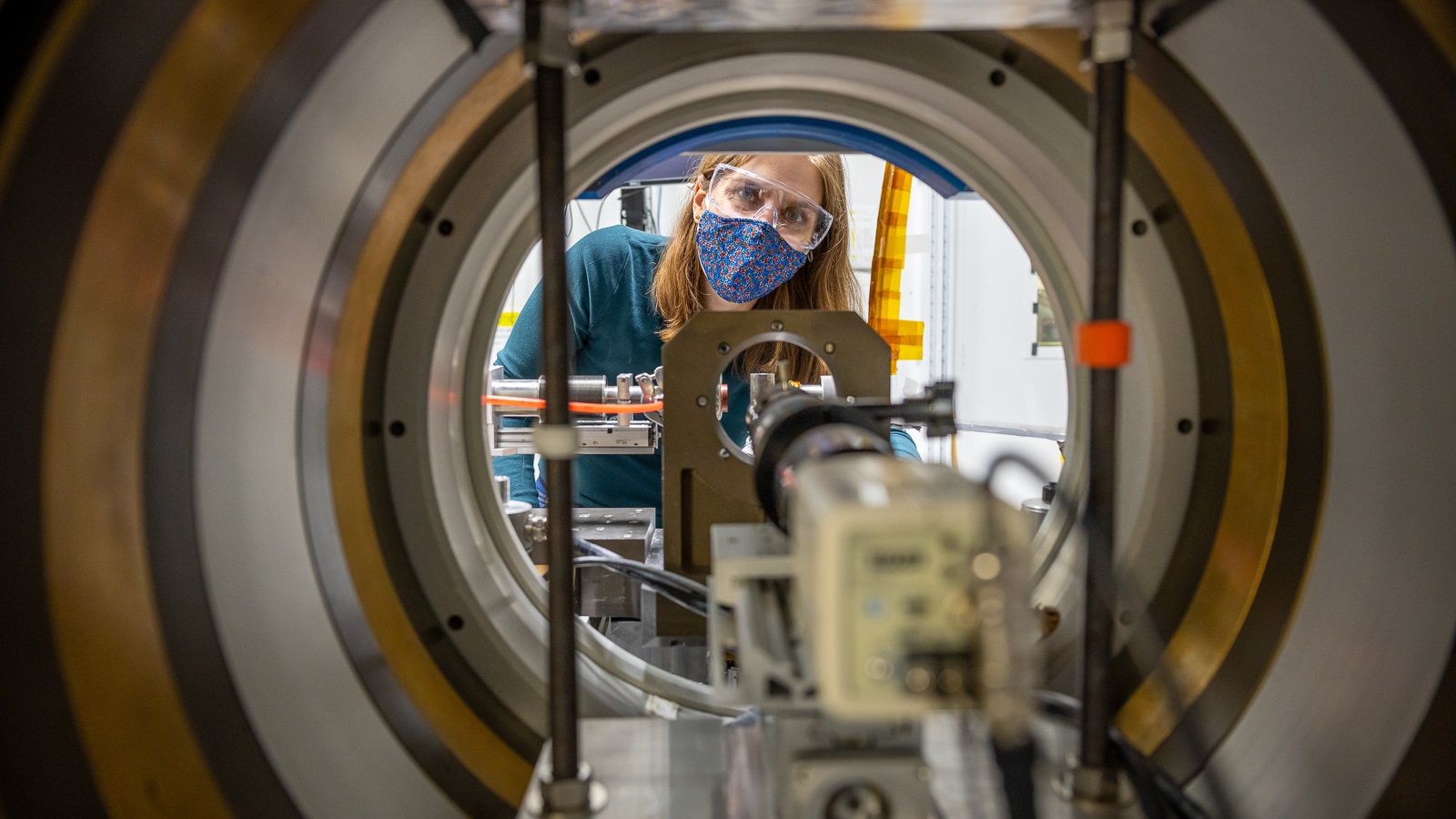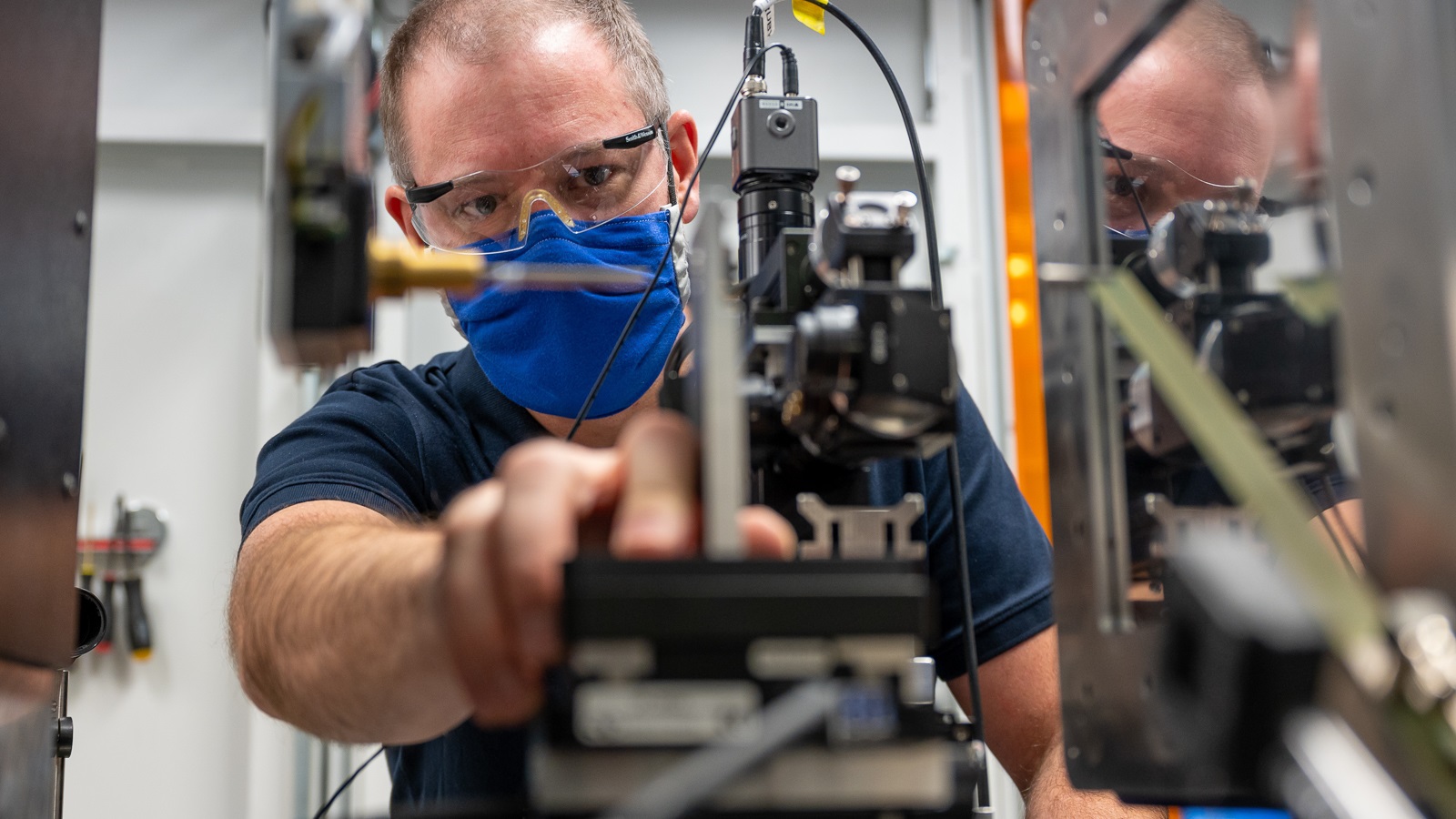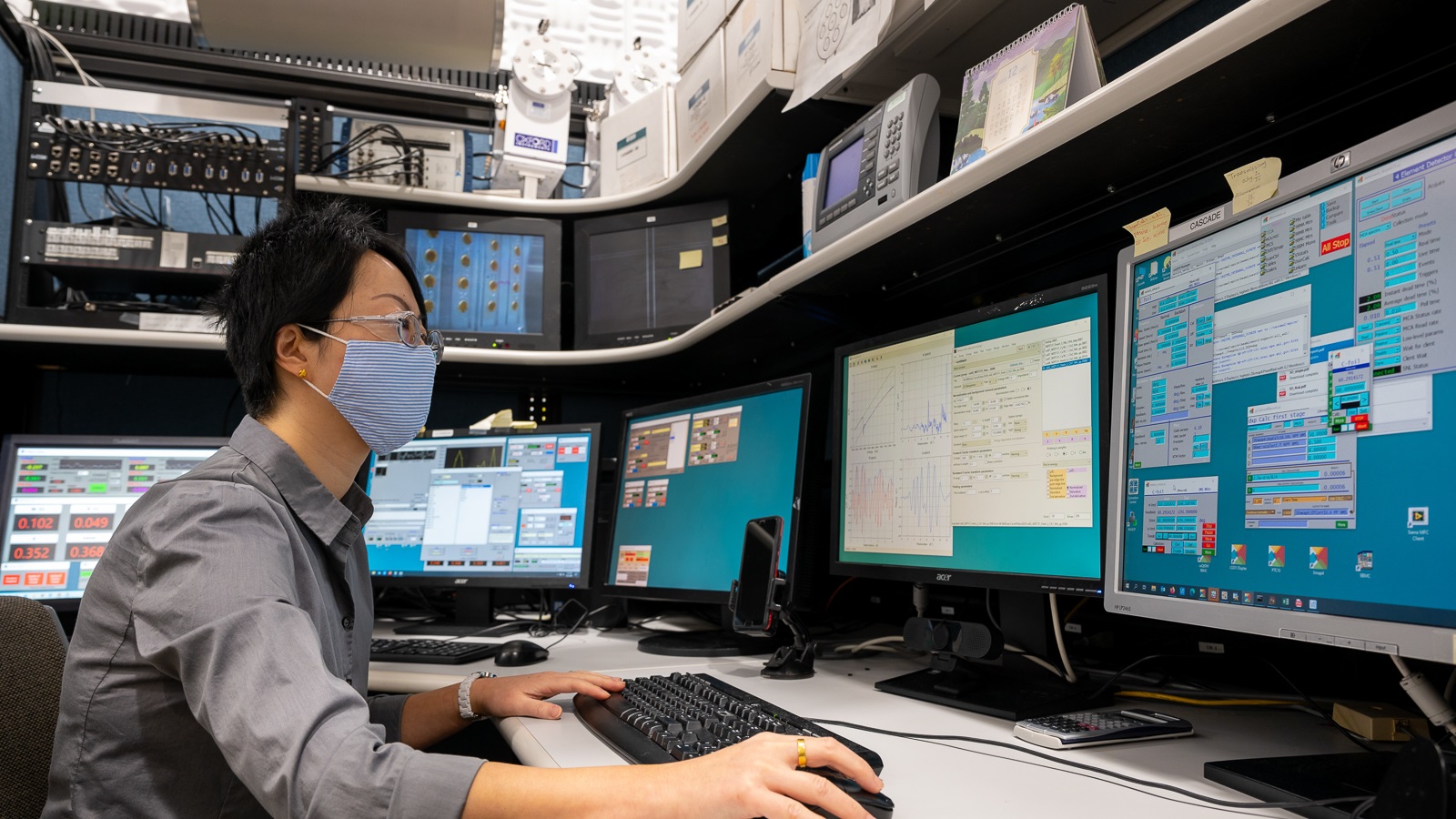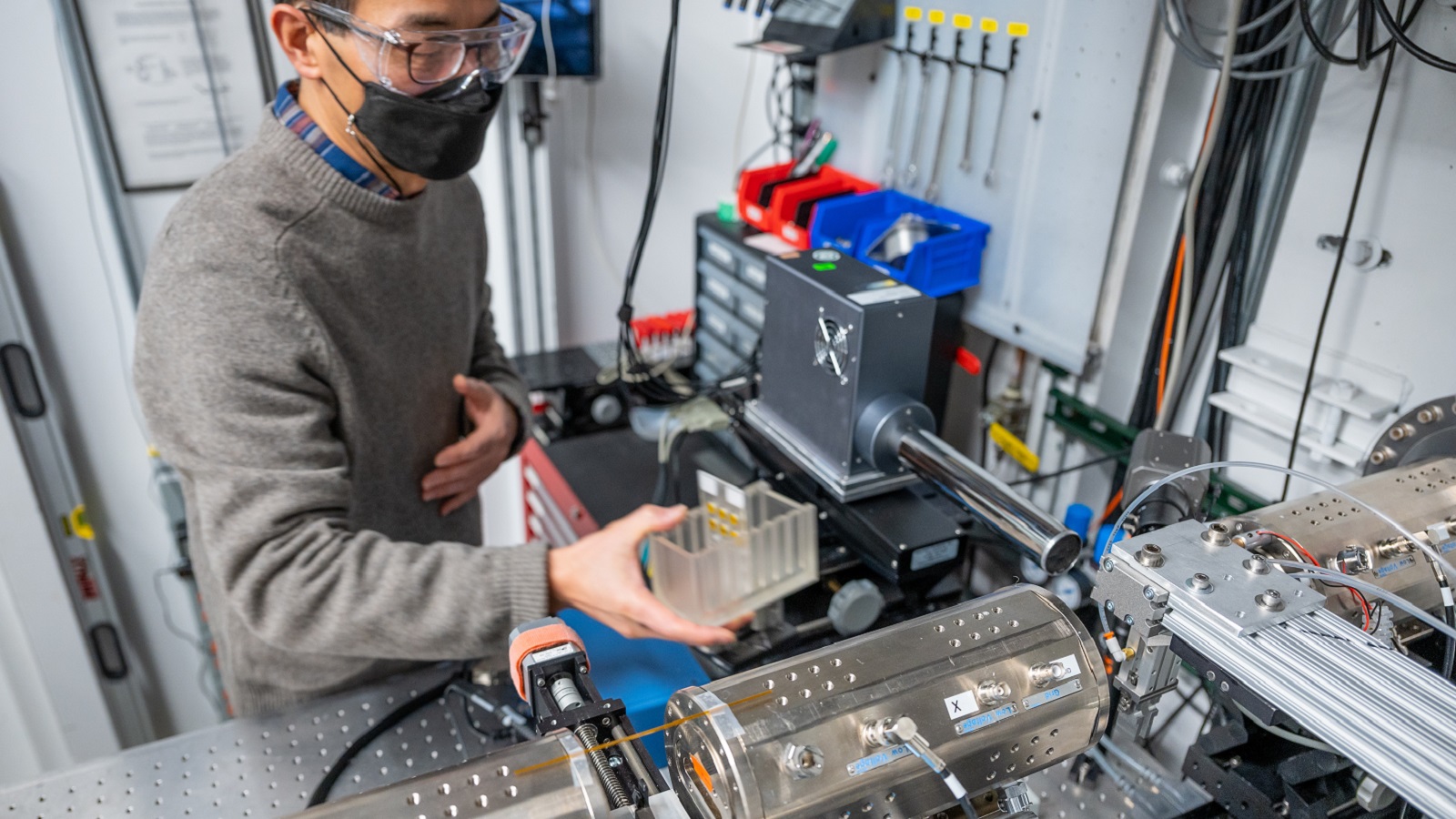Lee’s phone will sometimes ring at 2 or 3 a.m. It doesn’t happen often, he said, but when it does, his job is to spring into action. Lee is a beamline scientist at the Advanced Photon Source (APS), a U.S. Department of Energy (DOE) Office of Science User Facility located at the DOE’s Argonne National Laboratory. The APS runs around the clock for most of the year. When the phone rings inthe wee hours of the morning, it means scientists conducting research at the beamline have run into an issue with their experiment, and need the beamline scientist to help solve it.
“A beamline scientist has to handle multiple responsibilities,” Lee said. “The requests are sometimes urgent, and we are always on call. But I enjoy the challenge. It’s dynamic, and every day is different.”
“A good beamline scientist does more than just set up the X-ray optics and equipment for the experiment. If you know what the researchers are hoping to learn, you can set up the experiment in the best and safest way.” — Tianpin Wu, Physicist, X-ray Science Division
The APS is basically a very strong X-ray machine, which circulates tiny particles called electrons. That accelerator is so large you could fit a baseball stadium in the center. Around the ring are different beamlines used to conduct experiments.
Every year, more than 5,500 scientists bring their experiments to the APS, one of the most powerful X-ray light sources in the world. They’re there to use the ultrabright X-rays to conduct research that could lead to stronger materials, longer-lasting batteries,and a greater understanding of the natural world.
When those researchers bring their samples and equipment to the APS, their main contacts at the facility are the beamline scientists like Lee, who are assigned to the beamlines they are visiting. Beamline scientists work with research groups using the APS to help design and conduct their experiments, provide necessary tools and training, and remain on call around the clock to assist. It’s no exaggeration to say that without the beamline scientists, research at the APS would not be possible.
It’s hard to quantify everything that beamline scientists do — as Lee says, every day is different. But the crux of the job is to make sure that teams conducting research at the APS make best use of their time and conduct successful experiments.
“I normally start working with researchers two months before they come to the beamline,” said Tianpin Wu, who has worked as a physicist at one of the beamlines for eight years. Wu began her Argonne career as a postdoctoral researcher in chemical science and engineering, and she used the APS to conduct experiments of her own. This experience, she said, taught her what visiting scientists need when they come to the beamlines with samples in hand.
“If I know the scientists and their project, I can help them design their experiment,” Wu said. “A good beamline scientist does more than just set up the X-ray optics and equipment for the experiment. If you know what the researchers are hoping to learn, you can set up the experiment in the best and safest way.”
Jesse Smith agrees. Smith is a physicist on the High-Pressure Collaborative Access Team (HP-CAT) beamlines at the APS, where he makes use of his graduate studies in high-pressure physics. He describes his role as a beamline scientist as service-oriented, providing support to visiting scientists to complete their experiments successfully.
“Communication is key,” Smith said. “At my beamline end station, research groups are usually only scheduled for a limited amount of beam time, so I help them get the most they can out of that time.”
Sometimes, Smith said, that involves helping the research team juggle their many tasks, so they won’t need to light up his cell phone at 3 a.m.
Wu agrees, adding that preparation pays back.
“You need to make connections with the researchers, so you know what they need, and they know what you can do,” she said. “Always have a backup plan, and always be honest. If you are not ready to offer specific equipment, services or support, let them know before their trip then we can figure out alternatives ahead of time. Communication needs to be fair and open.”
Mary Upton says that the variety of the job keeps her interested. Upton’s background is in inelastic X-ray scattering, which is the specialty of the beamline where she works as a physicist. She said her job includes everything from helping design experiments to checking hardware to fixing software issues, and the community of beamline scientists supports one another.
“There is nothing grad school teaches you if not to be flexible,” she said. “You’re never going to be great at everything. We have a team with different strengths.”
Smith agreed that the graduate school(advanced schooling beyond college) and postdoctoral research (research after you received your Ph.D., the highest degree) experiences are good preparation for the day-to-day tasks of a beamline scientist.
“You need to learn how to be a good technical writer to prepare for publication,” he said. “You need to know how to design the apparatus(device), and the graduate and postdoc experience prepares you for that. You need to have a set of skills and learn to do a varied selection of things.”
Smith is also appreciative of the community of scientists helping each other at the APS every day, noting that people with different skills support each other, bringing different experiences and perspectives to the table.
Wu is a case in point. Her beamline is one of the few at the APS with the capability for special experiments in which the sample is affected by the gas environment and/or temperature, and the X-ray data are captured in real time. She knows that her background in chemistry helps the team design and carry out these experiments. She can tell visiting scientists exactly how to design efficient X-ray measurements to analyze the chemical reactions they are looking for.
And as the safety captain of her beamline, she knows how important it is to design and execute these experiments with that in mind. “Safety is more important than efficiency,” she said.
Lee’s background is also in chemistry, and the beamline he works on offers the combination of several techniques for chemical and materials science. But one thing he was surprised to find himself doing over the last several months was hardware and software development for remote access to the beamline. For safety’s sake during the COVID-19 pandemic, the majority of science at the APS has been conducted remotely this year, and like many beamline scientists, Lee found himself helping to design the new system for his beamline.
“It’s amazing how you can deal with having to become an engineer and a web developer in order to build a remotely operating robotic system, design a 3D-printed sample holder, and develop web-based user interfaces to communicate with users,” Lee said. “In a month, the team developed everything.”
Guiding scientists through the remote access system is another skill that beamline scientists have picked up in recent months. Upton said she has recently worked with research groups who have never been to the APS, and her knowledge of the equipment has proven valuable to them.
“The interface can feel like a video game,” she said. “So we coach them through it, since the beamline scientists know what the setup looks like in real life.”
With so many balls to keep in the air, it can be tough for beamline scientists to find time for their own research. Wu is interested in single-atom catalysis and research on batteries, and she said she will collaborate with visiting scientists on their projects and co-author papers when she can. Upton has taken some time during the past few months to write papers, while Lee and Smith have pursued their interests in equipment development for their beamlines.
But they all agreed that working with visiting research teams comes first, and all of them said they feel supported in their efforts to do so while juggling family and home lives.
“It can be really fun and exciting,” Upton said. “You see new people every week, and they all have something they’re excited about, and it gets you excited about the research, too.”
Original article published on January 5, 2021
About the Advanced Photon Source
The U. S. Department of Energy Office of Science’s Advanced Photon Source (APS) at Argonne National Laboratory is one of the world’s most productive X-ray light source facilities. The APS provides high-brightness X-ray beams to a diverse community of researchers in materials science, chemistry, condensed matter physics, the life and environmental sciences, and applied research. These X-rays are ideally suited for explorations of materials and biological structures; elemental distribution; chemical, magnetic, electronic states; and a wide range of technologically important engineering systems from batteries to fuel injector sprays, all of which are the foundations of our nation’s economic, technological, and physical well-being. Each year, more than 5,000 researchers use the APS to produce over 2,000 publications detailing impactful discoveries, and solve more vital biological protein structures than users of any other X-ray light source research facility. APS scientists and engineers innovate technology that is at the heart of advancing accelerator and light-source operations. This includes the insertion devices that produce extreme-brightness X-rays prized by researchers, lenses that focus the X-rays down to a few nanometers, instrumentation that maximizes the way the X-rays interact with samples being studied, and software that gathers and manages the massive quantity of data resulting from discovery research at the APS.
This research used resources of the Advanced Photon Source, a U.S.DOE Office of Science User Facility operated for the DOE Office of Science by Argonne National Laboratory under Contract No. DE-AC02-06CH11357. Argonne National Laboratory seeks solutions to pressing national problems in science and technology. The nation’s first national laboratory, Argonne conducts leading-edge basic and applied scientific research in virtually every scientific discipline. Argonne researchers work closely with researchers from hundreds of companies, universities, and federal, state and municipal agencies to help them solve their specific problems, advance America’s scientific leadership and prepare the nation for a better future. With employees from more than 60 nations, Argonne is managed by UChicago Argonne, LLC for the U.S. Department of Energy’s Office of Science.
The U.S. Department of Energy’s Office of Science is the single largest supporter of basic research in the physical sciences in the United States and is working to address some of the most pressing challenges of our time. For more information, visit https://energy.gov/science.



